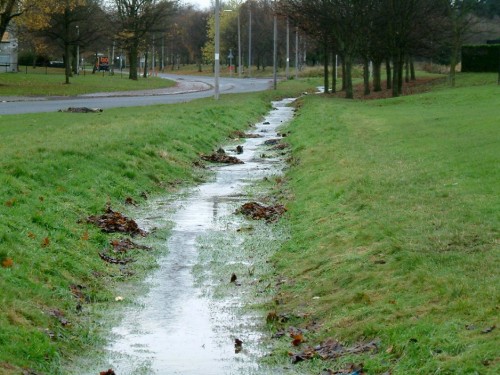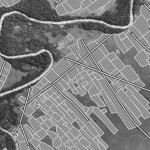“Simply put, swales are water-harvesting ditches, built on the contour of a landscape. Most ditches are designed to move water away from an area, so the bottom of the ditch is built on a modest slope, usually between 200:1 to 400:1. Swales, however, are flat on the bottom because they’re designed to do the opposite; they slow water down to a standstill, eliminate erosion, infiltrate the surrounding area with water, and recharge the groundwater table. When water moves along the flat bottom of a swale, it fills it up like a bathtub — that is, all parts of the bath tub fill at the same rate. The water in a swale is therefore passive; it doesn’t flow the way it would on a slope.”
“The swale system is self-regulating. Once the available water has reached an equilibrium, meaning it has filled the lowest point and has no where else to go, it just sits there, unmoving. And as it sits, it slowly seeps into the surrounding landscape, hydrating the soil and recharging the water table below. In this way, the swale fulfills three important functions: it carries water from the ditch to fill the dam, it rehydrates the landscape, and it prevents the dam from overflowing by acting as a channel back to the ditch. Swales are great for filling dams anywhere except for arid or hyper-arid environments, where they would dry up too quickly.”
“The mounds along the swale can provide enough water to establish a tree system with little to no additional irrigation. Conventional wisdom says that you need more than 15” or 381 mm of annual rainfall to establish trees. This is not necessary when you design a swale system to aid with water catchment, because it effectively concentrates and holds the available water in that area.”
Read more: Swales: The Permaculture Element That Really “Holds Water”. Picture: SUDSnet.
Previously:






